What fabrics shrink when washed?
 Almost all types of fabrics are prone to shrinkage; some lose more size, others less. Of natural materials, linen and corduroy “shrink” significantly, while synthetics, on the contrary, are practically not subject to deformation. In order not to spoil things, it is important to carefully select the mode, monitor the water heating temperature and spin speed. Let's figure out how much what types of fabrics shrink when washed, and whether it is possible to return clothes to their original shape after shrinking.
Almost all types of fabrics are prone to shrinkage; some lose more size, others less. Of natural materials, linen and corduroy “shrink” significantly, while synthetics, on the contrary, are practically not subject to deformation. In order not to spoil things, it is important to carefully select the mode, monitor the water heating temperature and spin speed. Let's figure out how much what types of fabrics shrink when washed, and whether it is possible to return clothes to their original shape after shrinking.
Why do tissues become deformed?
Shrinkage is a change in the size of fabric after improper washing and drying, excessive steam and heat treatment. Your favorite sweater can easily shrink by a couple of centimeters if you do not follow the instructions for caring for it. The labels on clothes are sewn on for a reason - they tell you how to properly wash, dry and iron the item.
So why can any textile shrink in principle? The fact is that fabric is formed by weaving fibers together. The susceptibility of a material to deformation is influenced by the origin of the fibers and the method of weaving. For example, both satin and denim are made from cotton, and these are completely different products, subject to “shrinkage” to varying degrees.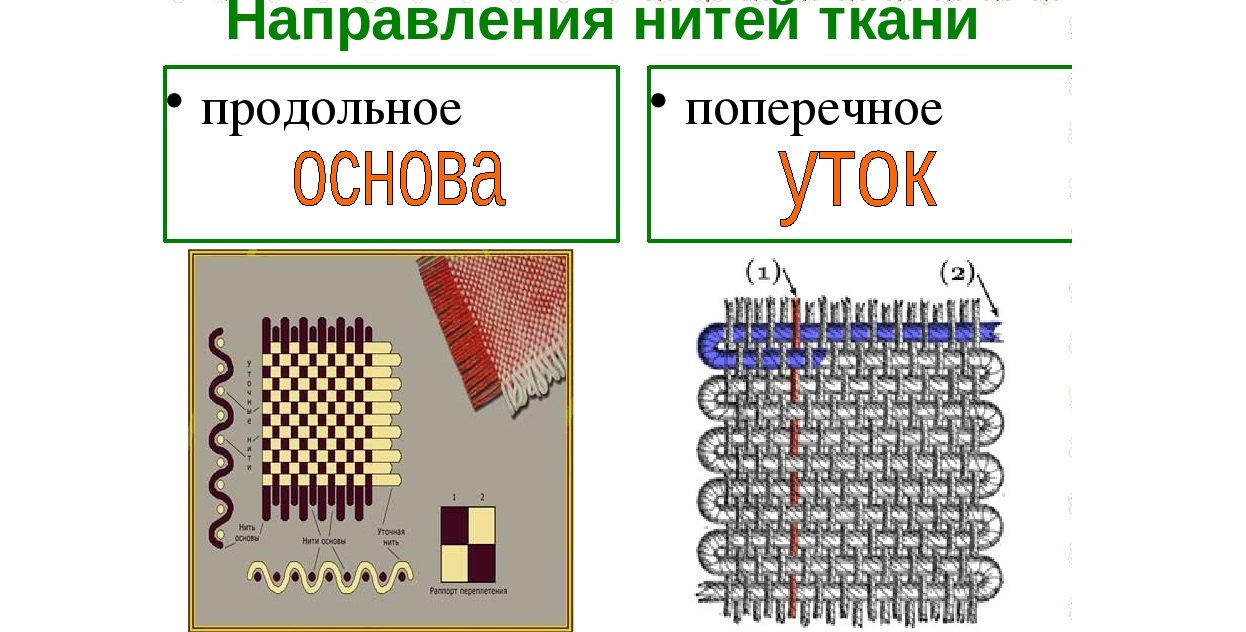
Today, two types of fibers are used in production: synthetic and natural. The first ones are created on the basis of oil. Artificial polymers practically do not compress; organic threads are another matter. Natural fabrics are elastic; their weave is much looser, which leads to stronger stretching. This is how the structure of the material changes, the thing is deformed.
It is important to follow the manufacturer’s recommendations, wash and iron products according to the rules, without violating the maximum permissible temperatures.
How much do different fabrics shrink?
If we talk about cotton-based fabrics, shrinkage sometimes reaches 3-5%, it all depends on the density and method of weaving. Corduroy, cotton wool and plaid are the ones that “shrink” the most. Chintz, percale, satin, denim, voile, poplin and other materials made from cotton fibers are slightly less deformed. Linen and mixed fabrics lose up to 6% after washing. The more cotton and linen added, the more the material can shrink.
Wool can shrink by 1.5-3.5%. Moreover, these values are typical for both drape and thin woolen materials. In some sources you can find other figures – up to 6%. This shrinkage is also typical for wool blend fabrics.
Fabrics made from natural and artificial silk are also subject to shrinkage. For example, crepe made from organic silk can lose up to 5% after washing, and from artificial silk – up to 7%. Satin fabrics are deformed by 3.5-5% of the initial size. Viscose can shrink by 4%, nylon - up to 1.5%, semi-nylon - up to 3.5%. Lining materials can also change in size: non-woven fabric, dubbing, etc.
We return items to original size
What to do if the item has changed in size? Will it be possible to return your favorite sweater or T-shirt to its original shape, or will you have to throw out the clothes? Stretching the material back is not as difficult as it might seem. To restore a product that has shrunk after improper washing, you will have to spend a little free time. There are several options, you can try each and find a winning path. Let's look at eight ways to restore tissue.
- If after washing the woolen product “shrinks”, you should soak it in ice water for 15 minutes. Then you need to take out the item, shake it to remove excess water, and lay it out on a horizontal surface. You cannot twist the wool; the fabric may become even more deformed. You can manually stretch the item to give it the desired shape. It is better to periodically adjust the material if it returns to a shrunk position.
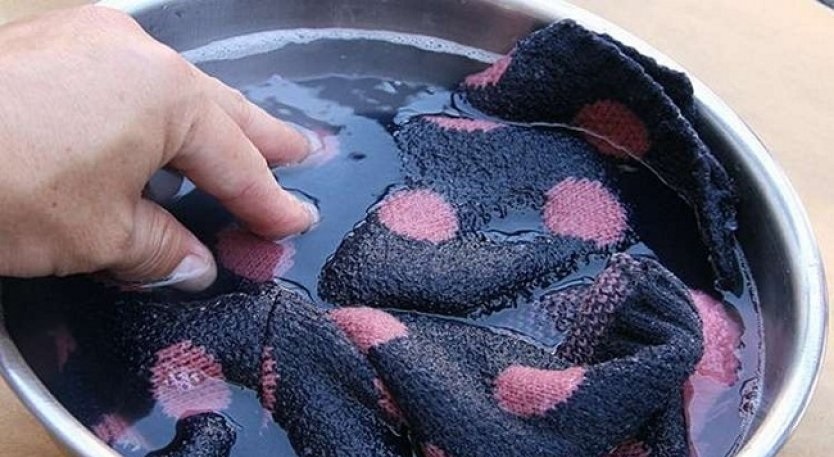
- After a “session” in cold water, you can not put a sweater or T-shirt to dry, but immediately put it on yourself. Therefore, if you have the opportunity to walk around in wet clothes, take advantage of it. Then the thing after drying will be just the perfect size.
- Popular advice is to add two or three tablespoons of hydrogen peroxide to the water and soak the shrunken item in the resulting solution for a couple of hours. After this, you cannot wring out silk or woolen items - you should simply lay them on a terry towel, which will absorb excess moisture.
- A synthetic or combined jacket (skirt, T-shirt) can also be restored. You need to put the product in cold water for half an hour, and then wash it in the machine using the delicate or manual mode. The water should warm up to 20-30 degrees, no more. It is also important not to put washing powder into the machine.
- Cotton items can be easily stretched with vinegar solution. You should take a clean cloth, soak it in vinegar, and “walk” the cloth over the cloth. The clothes are then hung on a line so that weights can be attached to the bottom. This way the material will straighten to the desired size.
- There is another option using vinegar. You need to pour 3 tablespoons of acid into a basin with ten liters of water, mix everything well. Soak things in this container for 20-25 minutes.Afterwards, the clothes are hung to dry on the balcony or in a well-ventilated room.
- Silk fabric can be stretched not by cold, but, on the contrary, by high-temperature methods. What to do? You should soak the silk in cool water, lightly wring out the product and iron it with a hot iron. During the ironing process, you can stretch the material to the sides to the desired size.
- If the manufacturer prohibits ironing the item, try stretching it with steam. Clothes are also first soaked in cold water and then steamed.
There are several technologies that allow you to correct the situation and give things their original form. Choose the optimal method, focusing on the fabric composition, recommendations and prohibitions of the product manufacturer. However, in any case, it is better to prevent shrinkage by taking preventive measures when washing.
Why do decatification?
For many, the word decatification is unfamiliar. In fact, this is a kind of forced shrinkage of the fabric from which it is planned to be sewn. Before cutting the material, it is subjected to wet-heat treatment - this is an integral stage of quality control of the future product. Any fabrics consisting of 50 percent or more natural fibers (wool, cotton, linen, hemp, silk) are decatified. Tests are carried out under conditions that comply with the recommendations on product labels.
All fabrics used for sewing items that are planned to be washed must be decated.
Decating of the material is not done before sewing, for example, a coat. If in the future only dry cleaning is allowed for an item, then simply steam the fabric with an iron before cutting.
So, cotton and linen are soaked, dried and ironed while still wet.The same is done with silk fabrics, however, they are “passed” over them with a slightly warm iron, from the wrong side. Silk that is subject to shedding is covered with a wet sheet and then ironed. Thick woolen fabrics are moistened with a spray, then the material is left to rest for 8-10 hours. Next, the fabric is ironed from the wrong side. Thin wool fabrics should simply be ironed through a damp sheet.
Thus, absolutely any thing can “sit down”. To prevent this from happening, it is important to follow the care instructions on the product label. If shrinkage does occur, you can correct the situation. Try stretching the item with your own hands, choosing one of the available methods.
Interesting:
Reader comments
- Share your opinion - leave a comment

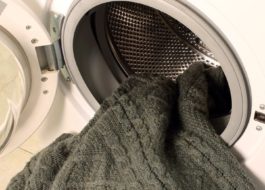

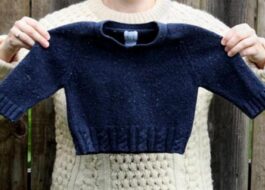

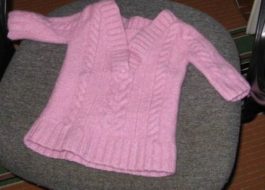















Add a comment